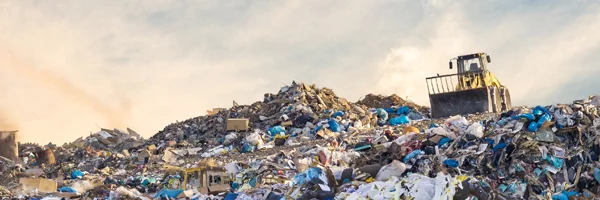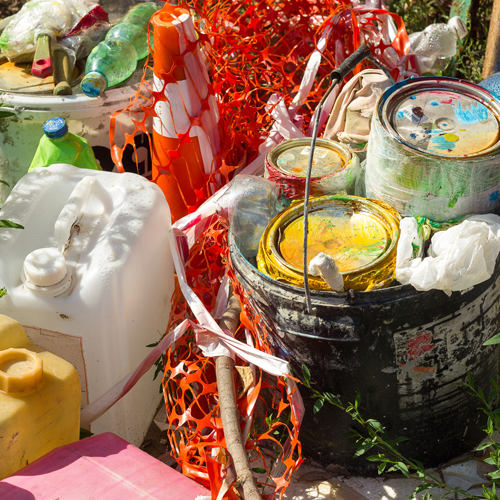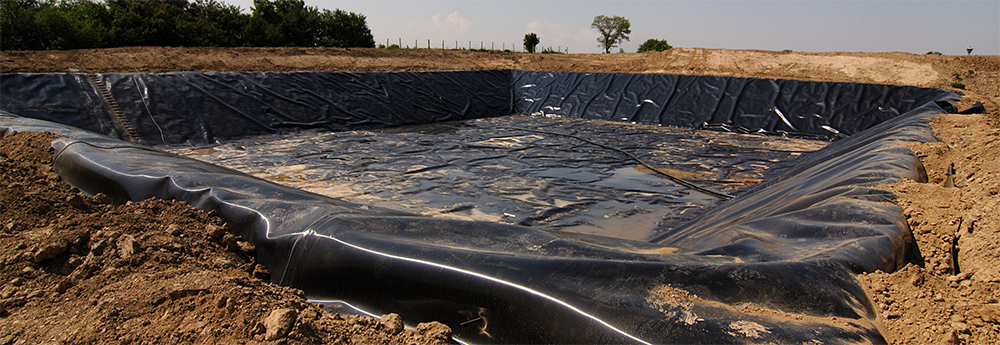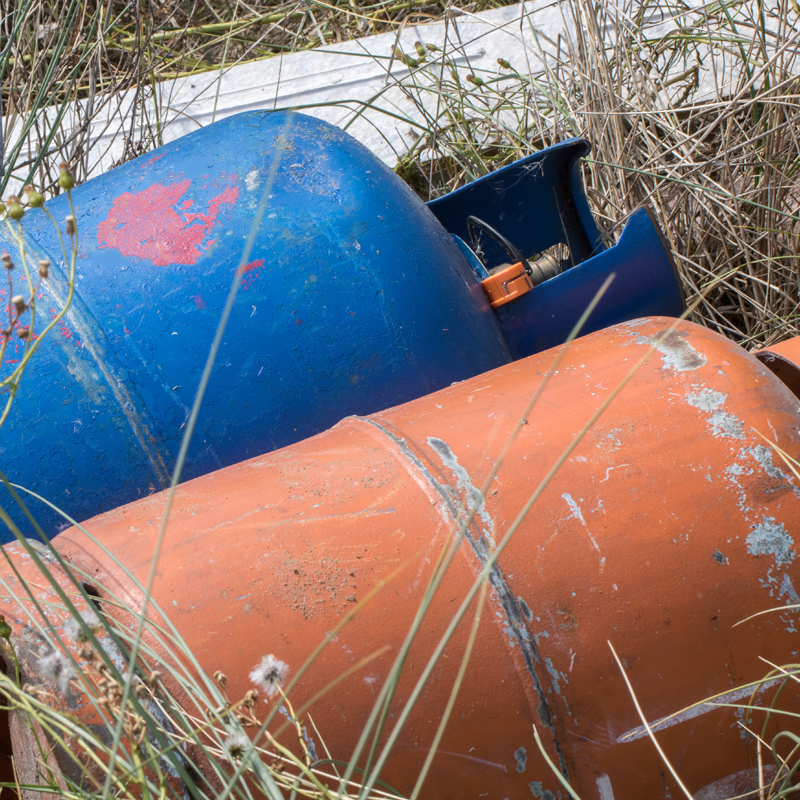How to Dispose of Hazardous Waste (Paint, Gas, + More)
Human health and the environment depend upon limiting the amount of hazardous products entering our water and air.
How to dispose of hazardous waste will vary depending on the nature of the substance, but taking the time to learn the proper disposal method can make all the difference in the world — literally.
Hazardous Waste Disposal Methods
Hazardous waste is defined by the U.S. Environmental Protection Agency (EPA) as any waste that has a dangerous effect on humans or the environment. It can be in solid, liquid, gas, or sludge form and toxic, flammable, reactive, corrosive, or any combination of these.
Hazardous waste disposal methods include:
- Landfills
- Underground disposal
- Incineration
- Dumping at sea
At Palmetto, our UN approved bulk bags can be used at all stages of the above disposal methods for storing/transporting your waste before it’s disposed of.
How to Dispose of Hazardous Waste: General Advice
People use many products in everyday life that are not considered hazardous — until it’s time to get rid of them.
Substances like paint, antifreeze, pesticides, used motor oil, pool chemicals, nail polish remover, and more are examples of household and commercial products requiring hazardous material disposal.
Disposing of commercial and household hazardous wastes like these requires specific measures, which may vary depending on the type of hazardous waste you have.
1. Always Follow Label Instructions
Some products will include disposal instructions right on their labels. If this is the case, make sure to follow those instructions.
It’s also a good idea to read the label before you purchase the product to be sure you’re willing to comply with the proper disposal procedures.
2. Purchase Only What You Need, and Use it All
You may find a deal on 5 gallons of paint or herbicide, but if you only need 5 gallons, there’s a chance you’ll have to dispose of the remainder.
Do your best to calculate the proper amount you need for a project, and make an effort to use all that you buy.
Usually, an empty container is not hazardous waste, so if you empty it, you need not worry about proper disposal.
If you find yourself with leftovers, see if a friend, business contact or community organization can use what you’ve got left, and give it away instead of disposing of it.
3. Take the Necessary Measures
When you read the disposal instructions on your product labels, you may discover that you can correctly handle a substance yourself with some special instructions.
Sometimes, you can wash a small amount of liquid down the drain with large amounts of water. Or, perhaps you can throw an item in the trash after preparing it a certain way.
4. Save for a Collection Program
Communities will often designate a day for household hazardous waste collection.
There will be a designated day, time, and place to drop off your hazardous waste, and you will need to be aware of which items they accept as they may not be able to take everything.
Sometimes, there is a small cost involved as well to cover the costs of proper disposal.
Where to Dispose of Hazardous Waste?
Check with your local environmental or solid waste agency for information on hazardous waste collection sites or upcoming collection events.
Sometimes, local businesses or organizations will take hazardous waste as well. Often, this will be if they must already dispose of similar substances used in their business. For example, a car repair shop can dispose of used motor oil.
Can most Hazardous Waste be Disposed of in a Landfill?
Most hazardous waste does end up in landfills. These facilities place hazardous waste in special units that prevent the waste from affecting water sources (both groundwater and surface water). There are standards for how hazardous waste landfills are designed, and they must include:
- Double liner
- Double systems for leachate collection and removal
- System to detect leaks
- Control measures for run on, runoff, and wind dispersal
- Construction quality assurance program
Paint Waste Disposal
How to dispose of your extra paint depends on the type of paint and how much is left over.
1. Water-based paints
Paint waste disposal depends on whether the paint is dry or not.
A small amount of water-based paint can usually be disposed of by spreading the paint on cardboard, plastic, or another disposable surface and letting it dry completely.
In comparison, dry water-based paint can be disposed of in regular trash.
Read the labels on your paint since some contain metallic pigments, such as chromium and lead, which are considered hazardous waste.
If you have too large an amount of paint to dry completely, see if you can give it to someone who can use it or contact your local environmental or waste agency for instructions on how to dispose of it.
2. Oil-based paints
Oil-based paints are regulated due to their flammability and inclusion of solvents, so they must be disposed of by an approved facility.
Waste gas disposal
Waste gas may not be something you have often, but if you have cans of gas in storage that you over purchased and don’t need, that gas has degraded and is now waste gas.
You can tell when gas has degraded by comparing its color to fresh gas. If it is significantly darker, you have two options:
- Small amount: Fill the tank with fresh gas to dilute it, and the engine will burn the old gas along with the fresh gas.
- Large amount: Take it to a state-approved household hazardous waste site.
Where can I dispose of old gas?
Waste gas that you can’t use must be disposed of at a hazardous waste disposal facility. If your community has a collection site or day, check to see if they handle waste gas disposal. Or check with local fire departments and auto repair shops as they are sometimes able to dispose of gas.
How to Dispose of Chemicals Properly
The proper disposal of chemicals will depend on what chemical you are dealing with.
Always read the labels for more clarification, and contact an environment or waste agency if you need more information on disposing of chemicals properly.
1. Household Cleaners
Most liquid-based cleaning products, such as bathroom cleaners, oven cleaners, or drain openers, can be disposed of by pouring them down the drain. Make sure to check the labels to be certain it is safe to do so.
2. Plant Chemicals and Fertilizers
It may seem counterintuitive since these chemicals are sprayed all over public lawns or gardens, but you cannot put plant chemicals down the drain or in the trash.
These are among the most hazardous household chemicals. For plant chemicals, you need to contact your waste service provider.
3. Paints and Stains
Whether for interior or exterior, paints and stains tend to have a very long useful life if stored correctly, but if you need to get rid of them, see if you can drop them off at a local home improvement store that can reuse them.
Check our guide on storing hazardous material for more on this!
4. Automotive Fluids
For chemicals like antifreeze, oil, or radiator fluid, you can either see if there is an automotive shop nearby that will take them, or you will need to take them to a hazardous waste disposal site.
How to Dispose of Light Bulbs
Light bulbs are a common household item that homeowners may not be sure how to handle properly. The method of disposal will depend on which type of bulbs you have.
1. Fluorescent Bulbs
Otherwise known as CFLs, or compact fluorescent light bulbs, these bulbs, along with any others containing mercury, should be recycled. Your local waste collection agency or hardware supply store should be able to help you recycle your bulbs.
2. Incandescent Bulbs
Incandescent bulbs can be thrown in your regular trash. However, you may want to put them into another box or bag within the trash, so if they break, the glass won’t cut open your trash bag.
3. LED Bulbs
LED bulbs contain lead and arsenic, so you should not throw them in the trash. Check with your local recycling center to see if they can accept LED bulbs.
Make Conscious Decisions on Hazardous Waste Material Disposal
The best way to avoid dealing with hazardous waste disposal is to buy what you need and use it up, but in circumstances where that isn’t possible or doesn’t happen, you need to be very sure about how you are disposing of hazardous waste.
Reading the labels and learning where your drop-off locations are for hazardous waste are important steps in properly handling hazardous materials disposal.
If you’re ever in doubt about how to dispose of hazardous waste materials safely, contact your nearest waste management facility or environmental office for more information.











